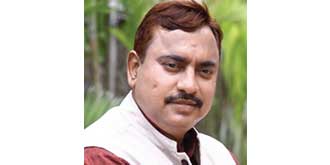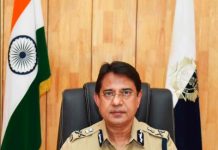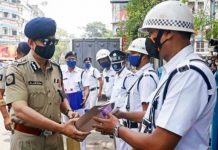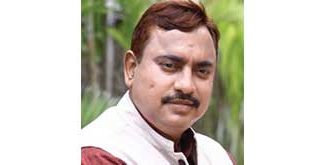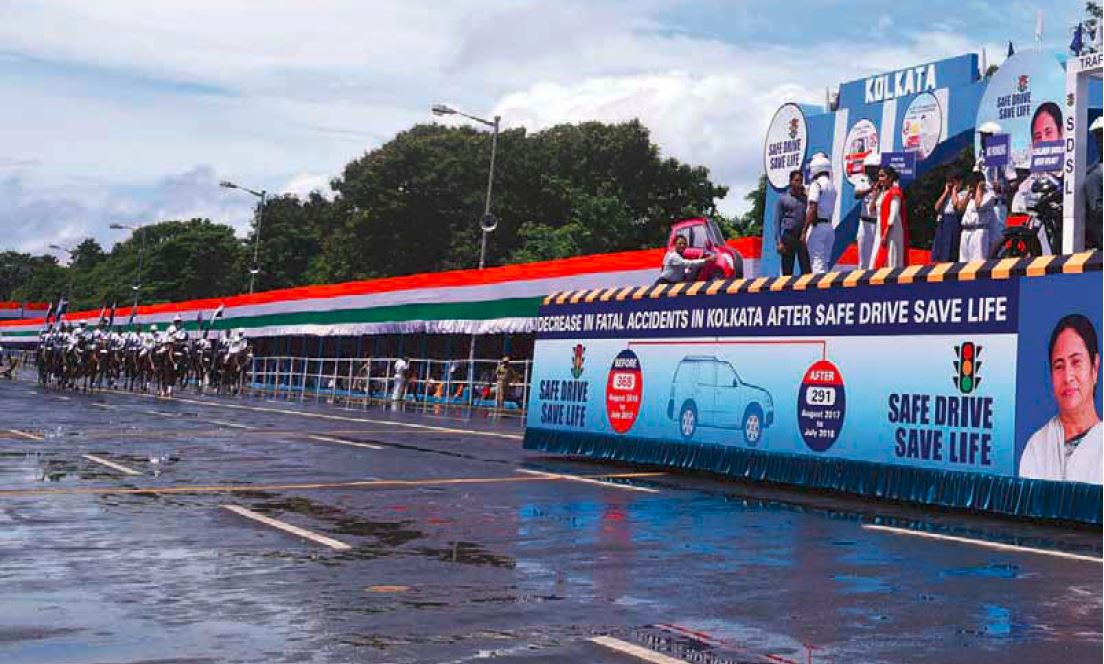 Managing the traffic of a thriving economy like India is a tumultuous task. The galloping number of vehicles on roads swelling the semi-urban population, poor road conditions and lack of awareness about safety measures are some of the few reasons that are creating massive impediment in building a structure that can shoulder the burden of urban traffic management.
Managing the traffic of a thriving economy like India is a tumultuous task. The galloping number of vehicles on roads swelling the semi-urban population, poor road conditions and lack of awareness about safety measures are some of the few reasons that are creating massive impediment in building a structure that can shoulder the burden of urban traffic management.
According to a study report published in International Journal of Latest Engineering and Management Research (IJLEMR), “India is facing a serious crisis of metropolitan growth at the present time. Whereas urbanization has been an implement of economic, social and political progress, it has led to serious socio-economic problems. Metropolitan sprawl is rapidly encroaching the valuable agricultural land. By 2030, more than 50 percent of India’s population is expected to live in city areas. Following problems need to be highlighted.”
Kolkata is one of the fastest growing cities of the country. The city has been the epicentre of business and employment for millions of people migrating from the eastern and northeastern states.
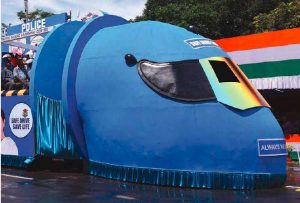 A latest study report suggests that more than 85 percent of the population of the country is aiming to buy a private vehicle in the next five years which will definitely throttle the entire traffic management skeleton of the nation. An urban transport expert Prof N Ranganathan told a leading national daily, “Despite having a high share of people using public transport, Kolkata is congested for reasons such as low share of road network and poor geometrics and huge flow of vehicles in the core part of the city”.
A latest study report suggests that more than 85 percent of the population of the country is aiming to buy a private vehicle in the next five years which will definitely throttle the entire traffic management skeleton of the nation. An urban transport expert Prof N Ranganathan told a leading national daily, “Despite having a high share of people using public transport, Kolkata is congested for reasons such as low share of road network and poor geometrics and huge flow of vehicles in the core part of the city”.
The report also unfurled some startling data about the massive economic loss that the nation has to incur due to traffic snarls that occur in some of the fastest growing cities of India. The four major economically vibrant cities of the nation, Bangalore, Kolkata, Mumbai and Delhi drain out 1.5 lakh crore annually due to rampant traffic congestion.
Untangling the Gordian Knot:
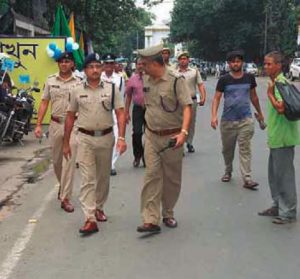 Kolkata Police and the government of West Bengal have already rolled out stringent laws to rein in the traffic violators. Though experts and research scholars, monitoring the entire condition closely, feel that apart from taming the traffic violators with strict laws, the government and law-enforcement agencies should try to enhance the mobility which will further propel the economy of the state.
Kolkata Police and the government of West Bengal have already rolled out stringent laws to rein in the traffic violators. Though experts and research scholars, monitoring the entire condition closely, feel that apart from taming the traffic violators with strict laws, the government and law-enforcement agencies should try to enhance the mobility which will further propel the economy of the state.
“It is extremely important to erase congestion, reduce road fatalities and vehicular emissions”, says Professor Bhargab Maitra, IIT Kharagpur. Safe Drive Save Life project is creating a sustainable system by reducing emissions, by arresting road accidents. The support from the core of the government has fueled SDSL and helped it to touch new heights, added Professor Maitra.
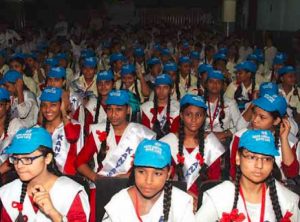 The analysts believe that the transport system of any city depends on a demand, supply interaction and this interaction happens in the interface of control. The skeleton of the transport system of any thriving state like West Bengal hangs on these three factors— demand, supply and control. In the last few years, the Kolkata Traffic police have successfully ingrained some advanced technologies that have completely changed the traffic management canvas of the state.
The analysts believe that the transport system of any city depends on a demand, supply interaction and this interaction happens in the interface of control. The skeleton of the transport system of any thriving state like West Bengal hangs on these three factors— demand, supply and control. In the last few years, the Kolkata Traffic police have successfully ingrained some advanced technologies that have completely changed the traffic management canvas of the state.
 Automated speed detection systems have been installed in different strategic locations, to tame the speed demons. Induction of SCADA, live traffic updates on Google map have given remarkable facelift to the traffic management system of the state of West Bengal discloses Gautam Gupta, OSD & Ex-Officio, DC Traffic (II)Kolkata Traffic Police.
Automated speed detection systems have been installed in different strategic locations, to tame the speed demons. Induction of SCADA, live traffic updates on Google map have given remarkable facelift to the traffic management system of the state of West Bengal discloses Gautam Gupta, OSD & Ex-Officio, DC Traffic (II)Kolkata Traffic Police.
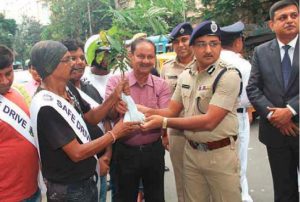 The technology has created rationality, established transparency and flushed out corruption from the entire system. The pool of data that is gathered through different monitoring devices should be preserved and analyzed. The better use of AI (Artificial Intelligence) and video analytics could magnify the benefit of these measures taken under the SDSL, believes Professor of Civil Engineering at IIT Kharagpur, Bhargab Maitra.
The technology has created rationality, established transparency and flushed out corruption from the entire system. The pool of data that is gathered through different monitoring devices should be preserved and analyzed. The better use of AI (Artificial Intelligence) and video analytics could magnify the benefit of these measures taken under the SDSL, believes Professor of Civil Engineering at IIT Kharagpur, Bhargab Maitra.
A better public transport infrastructure must be setup to maintain the balance of within the demand, supply ecosystem. Limiting the registration of new vehicles, modifying the modes of transport can bring down pressure on the roads or else old cities like Kolkata and Howrah will soon choke under the increasing pressure of vehicles and could restrict the progress of SDSL, predicts Maitra.
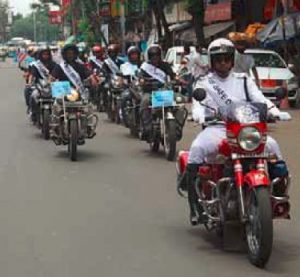 To increase the outreach of the Safe Drive Save Life, Kolkata Police has joined hands with the KarmYog Foundation. A mega mass-education campaign was framed and rolled out across the state by involving the stakeholders such as drivers, school students and cops. “I have been involved with mass education programmes involving large-scale culture and behaviour change for over 2 decades. The level of impact that we have seen in the case of “Safe Drive Save Life” in the very first year of the programme is unprecedented. I attribute the success to two factors:
To increase the outreach of the Safe Drive Save Life, Kolkata Police has joined hands with the KarmYog Foundation. A mega mass-education campaign was framed and rolled out across the state by involving the stakeholders such as drivers, school students and cops. “I have been involved with mass education programmes involving large-scale culture and behaviour change for over 2 decades. The level of impact that we have seen in the case of “Safe Drive Save Life” in the very first year of the programme is unprecedented. I attribute the success to two factors:
1. The sustained, 360-degree engagement with the entire cross section of citizens. There were no sporadic measures.
2. A well thought through strategy that was executed with the wholehearted commitment by the entire team… from Chief Minister Mamata Banerjee to the last Constable…
This is what has made it into a constructive people’s movement—affirms Sourabh J. Sarkar.


